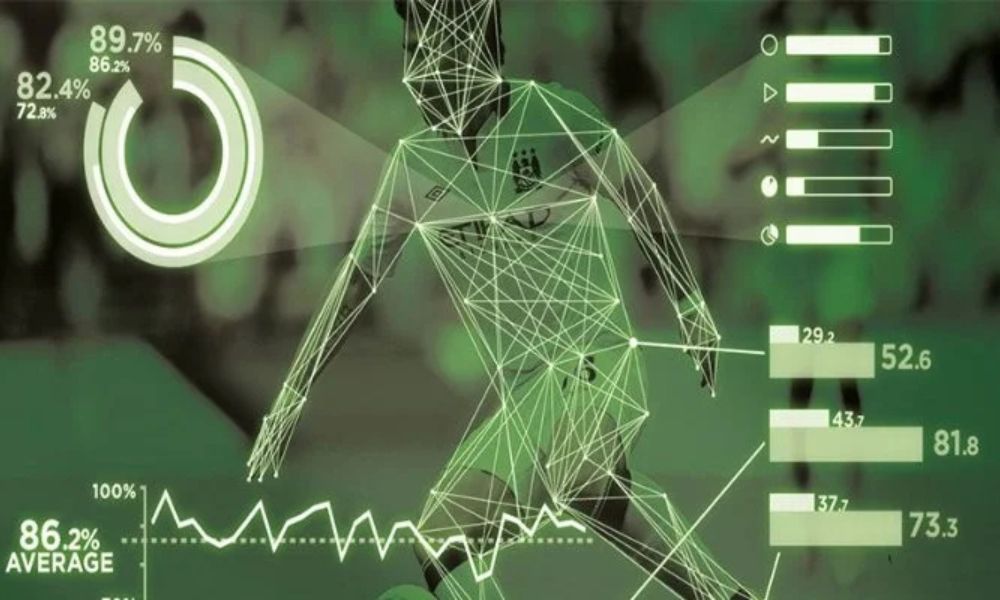In the last two decades, football has experienced a profound transformation — not only on the pitch, but also behind the scenes. The rise of sports analytics and big data in football has changed the way clubs train, scout, and even make tactical decisions. What was once based mostly on instinct and experience is now heavily supported by numbers, algorithms, and advanced technology.
From Gut Feeling to Data-Driven Decisions
Traditionally, football decisions were guided by coaches’ intuition and the experience of scouts. While this knowledge was valuable, it was also subjective and prone to bias. The introduction of data analytics brought a new layer of objectivity.
- Clubs now use player-tracking systems to monitor movement and workload.
- Performance is measured in detail, from sprint speed to passing efficiency.
- Coaches rely on analytics to design training sessions and avoid overtraining.
In this way, football has moved from being an “art of intuition” to a sport where science and data play an essential role.
The Role of Big Data in Modern Football
Big data refers to massive amounts of information collected from matches, training sessions, and even wearable devices. Today, each professional football game generates millions of data points.
- GPS vests track distance, acceleration, and intensity.
- Cameras monitor positioning, tactical shape, and pressing lines.
- Algorithms evaluate decision-making under pressure.
This data is processed to provide insights not visible to the human eye. For example, analytics can reveal which player is best at breaking defensive lines, or which goalkeeper saves the most shots from specific zones. For those who are exploring different betting platforms, there are several reliable 1xbet alternatives that also provide strong features, competitive odds, and secure mobile apps.
Revolution in Player Recruitment and Scouting
One of the most visible impacts of analytics has been in player recruitment. Clubs now combine traditional scouting with data-driven evaluation.
- Moneyball in football: Inspired by baseball, many clubs use undervalued statistics to find hidden gems.
- Clubs like Liverpool and Brentford have gained reputations for smart recruitment through advanced analytics.
- Instead of relying only on highlights, data provides a complete picture of a player’s contribution to the team.
This approach reduces risks in the transfer market and helps smaller clubs compete with financial giants.
Tactical Evolution Through Analytics
Data has not only influenced recruitment but also football tactics. Modern coaches use analytics to refine strategies in real time.
- Analysis of pressing efficiency helps identify the best moments to press opponents.
- Passing networks reveal how players connect and whether the team maintains balance.
- Heat maps show positional discipline and movement patterns.
For example, Pep Guardiola’s positional play and Jürgen Klopp’s gegenpressing are both heavily supported by data analysis that proves their effectiveness.
Injury Prevention and Sports Science
Perhaps the most underrated benefit of analytics is in injury prevention. Clubs now use predictive models to identify when a player is at risk.
- Monitoring training loads ensures athletes recover properly.
- Data from wearables tracks fatigue and muscle stress.
- Medical staff can intervene before a minor issue becomes a major injury.
This not only protects players but also saves clubs millions by reducing long-term absences.
The Future: Artificial Intelligence and Predictive Football
The next step in football analytics lies in artificial intelligence (AI) and machine learning. These technologies can predict match outcomes, player development, and even tactical trends.
- AI scouting tools will highlight future stars at youth level before traditional scouts notice them.
- Predictive models will simulate matches and suggest tactical adjustments.
- Fans will also benefit from personalized insights through broadcasting and apps.
As football continues to embrace data, the line between science and sport becomes even thinner.
Challenges and Criticism
Despite its advantages, the use of big data in football has sparked debate.
- Some argue that too much reliance on statistics reduces creativity.
- Others worry about the privacy of players, as wearable devices collect personal health data.
- Smaller clubs often lack the budget to invest in advanced analytics systems, widening the financial gap.
Yet, the consensus is clear: ignoring data in modern football is no longer an option.
Conclusion: Football in the Age of Data
The development of sports analytics and big data in football has reshaped the sport at every level. From recruitment and tactics to injury prevention and fan engagement, data is now at the core of decision-making.
Football remains a game of passion, unpredictability, and emotion — but beneath the excitement lies a foundation of algorithms, statistics, and science. The clubs that adapt fastest to this new reality are not only more competitive today but are also building the future of the world’s most popular sport.



























